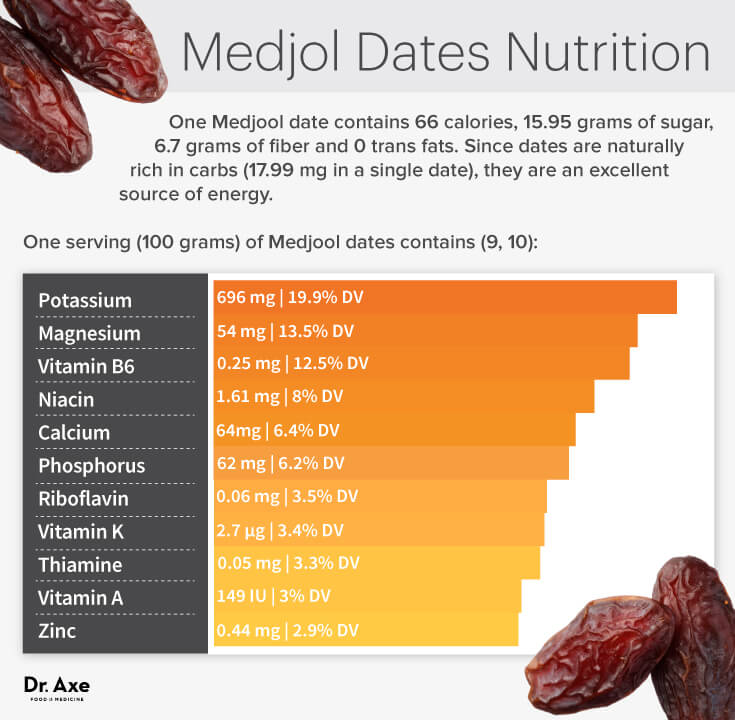Everyone knows the feeling — uncomfortable, heavy, expansive — of being bloated. It is one of the most common complaints out there, and the causes for bloating number in the dozens.
Let us go through a quick list of the most common reasons for bloat in relationship to your gut — and what to do about them.
The Food You Eat

1. Foods that are well-known gas causers: Broccoli, cabbage, Brussels sprouts, beans, soy, gluten and dairy products all have a long record of bringing on the bloat.
2. Salt: Excessive salt consumption, particularly when combined with low water intake and/or a low mineral intake will actually pull water from your cells and deposit it in the spaces between cells, giving you the appearance of holding water and making you feel puffy.
3. Sugar alcohols and fake sweeteners: You’ve got to respect the maltitol. Anyone who has accidentally overeaten sugar-free candies knows exactly what I am talking about here. Sugar alcohols are not broken down by the human GI tract, remaining whole. They pull fluid and gas into the intestine. Xylitol, sorbitol and mannitol are also capable of exerting these effects. Fake sugars like Splenda, aspartame and others can also create these issues. Read those labels, folks, particularly in protein bars and protein shakes. Gum chewers who can’t pin down why they are bloated should consider their gum chewing habit.
4. Foods you are sensitive to: Many of us are walking around with a food sensitivity we are not aware of, because, well, we’ve always eaten that food! Finding and removing food sensitivities from your diet is a project you want to pursue if you have been having chronic gastrointestinal distress in spite of being told that you are “fine”.
5. FODMAPs: This acronym stands for Fermentable Oligosaccharides, Disaccharides, Monosaccharides and Polyols. It’s a big mouthful that refers to certain types of carbohydrates and fibers that are highly fermentable (gas-causing) to the gut bacteria.
6. Foods that aren’t appropriate for any diagnosis you may have: Like FODMAPs with IBS and SIBO, there are some foods that don’t work well in certain conditions, no matter how healthy. Examples of this are nightshades (white potatoes, tomatoes, bell pepper, eggplant) in those with IBD (inflammatory bowel disease) and gluten in those with autoimmune conditions.
Solution: The most reliable way to sort out which foods do what to your body does not lie with any test (though IgG food sensitivity testing can help guide, it is by no means definitive), but with an elimination-challenge diet. No test, checklist or hunch of a natural health guru trumps your own experience.
The Way You Eat

7. Not chewing well: Chewing helps pre-digest food by mechanically breaking it down and biochemical breaking it down via enzymes found in the saliva. When you don’t chew well, it puts more mechanical and biomechanical stress on the stomach and small intestine to break things down. This, in turn, can bring on the bloat.
8. Eating on the run: Shoveling food down as you stand next to the sink or the fridge does nothing to help prep your brain and gastrointestinal system to help you digest your food.
9. Overeating: Overconsumption of any food can create gas and bloating, for very similar reasons as not chewing your food does. A greater volume of food requires more energy and resources for breaking it down.
Solution: Insert mindfulness into mealtimes. When you eat, sit down. Pay attention to the taste and texture of your food. Chew. Don’t talk with your mouth full, as this introduces excessive air into your system. Slow down as you eat, to give your brain — and second brain (the enteric nervous system, ENS) — a chance to gauge when you are satisfied, and to orchestrate the creation/release of digestive enzymes, acid and bile.
Your Ability to Digest What You Eat

10. Low digestive fire: I call the body’s ability to break down carbohydrates, fats and proteins into their building-block constituent compounds of starches, fatty acids and amino acids through the use of enzymes, bile and stomach acid “digestive fire.” When we lack production of one of these factors, your body’s ability to break down these macronutrients is compromised. Thus, the ability to absorb them is also interrupted. Unbroken, partially-digested food compounds are more fermentable to the gut flora and more provocative to the immune system. The end result? That bloated feeling.
11. Carbohydrate malabsorption: Lactose intolerance is the most famous example of this, but fructose malabsorption and the inability to digest other carbohydrates is also a possibility. Undigested and unabsorbed compounds in your gut are likely to cause gas and bloating. Carbohydrate malabsorption is easily diagnosed via a breath test, particularly if you suspect fructose malabsorption. Many of those who are lactose intolerant discovered it through trial and error, but this is more difficult with other forms of carbohydrates.
Solution: If you feel your digestive fire may not be burning brightly, consider supplementing with a digestive enzyme at mealtimes. You may also try taking a teaspoon of apple cider vinegar before meals, incorporate ginger and turmeric into your diet, and follow the other solutions in this piece, as low fire is often caused by a combination of reasons.
The Health of Your Microbiome
12. Dysbiosis: Dysbiosis is an umbrella term for an imbalance in your microbiome. Your microbiome is a beneficial colony of one hundred trillion bacterial cells residing in your large intestine. When the numbers of good guys drop, or the number of unsavory characters increases, this is called dysbiosis. A dysbiotic gut flora is a gassy one. Unfortunately, dysbiosis irritates the lining of the gastrointestinal tract, as well, adding another layer of inflammation and with it, the potential for even more bloating.
13. Pathogenic infection: There are many types of specific dysbiosis, including frank infection with a parasite or harmful bacteria or overgrowth of Candida or other forms of yeast. These can be objectively measured and diagnosed with a stool test.
14. SIBO: Small Intestine Bacterial Overgrowth is a colonization of bacteria — even normal ones — where they don’t belong. The small intestine is supposed to be relatively sterile, but sometimes the guys from our microbiome move north and set up shop. There they do their bacterial thing, but because the location is off, we experience feelings of bloat, excessive gas and spasm. SIBO, unlike other forms of dysbiosis, is diagnosed via a breath test.
Solution: For those of you who have tuned up your nutrition and lifestyle and spruced up your digestive fire but are still experiencing symptoms, it is time to rule out dysbiosis and infection. This is done with a stool test. You can also help build a robust microbiome by eating lots of veggies (that you tolerate) and fermented foods, using antibiotics judiciously, laying off hand sanitizers and considering a probiotic.
The Integrity (or lack thereof) of Your Gut Lining
15. Your small intestine: The cells that line your small intestine are supposed to stand next to each other, tightly. Chronic inflammation from dysbiosis or inflammatory disease states, consuming foods you are sensitive to, high stress, alcohol binges and a host of other factors can disrupt this integrity and unbutton the cells.
With this interface disrupted, the immune system interacts with food and native bacterial compounds in a non-ideal way. It views them as invaders and generates an attack. These inflammatory compounds further disrupt the integrity of the lining, generate new food sensitivities, increase the risk of autoimmune reaction, and make you hold water and feel bloated.
16. Other problems with the lining: Ulcers, gastritis, esophagitis and even diverticulitis all can create the sensation of bloating.
Solution: While approaching any digestive issue, not only do we look to food, our ability to digest it and the health of the microbiome, we also must take steps to ensure that the structure that is housing all of this — the gut lining — is in good shape, too. There are many nutrients and compounds out there that help us accomplish this goal, including glutamine, n-acetyl glucosamine, chamomile, turmeric, zinc carnosine, MSM (methylsulfonylmethane), bone broth, gelatin and many more.
Your Lifestyle

17. Lack of sleep and downtime: The central nervous System (CNS) has two branches — “fight and flight” and “rest and digest.” When we are sleep-deprived, overworked and do not get enough rest, the fight or flight branch begins to dominate, and the rest and digest branch takes a back seat. This branch, however, helps keep things moving smoothly in the gut. When its function is suppressed, bloating can ensue.
18. Lack of Movement: Movement is life. All types of physical activity help keep the ENS, your second brain, running smoothly. The ENS is responsible for all of the minutiae of digestion, including the rate at which digestive factors are released and the regulation of peristalsis, the rhythmical, muscular contraction that propels food and gas down and out. There are few quicker ways to impair your ENS than to not move your body in some way, whether it is walking, stretching, yoga, weight training, sprints or whatever your pleasure.
19. Constipation: Bloating and constipation often go hand in hand. A slow bowel, much like a sedentary lifestyle, can leave you feeling full and uncomfortable. Addressing constipation is a key strategy in helping you de-bloat. Hydration, adequate fat, fiber and minerals, along with physical activity and sleep, are the first steps to take to tackle this common condition.
20. Stress: The prior two points are major causative factors of this point, but we can lump in here all types of mental, emotional and social stress for which we have no relief or release. As above, uncompensated stress greatly disrupts the ENS, which in turn creates a whole host of digestive distress, including bloating.
Solution: For starters, protect your sleep. Go to bed before 11:30 p.m. and do your best to get at least 7 hours of sleep. Indulge in a morning walk, using the mindfulness you are cultivating while eating to your walking experience, noticing the sights and sounds around you and the feel of air and sun on your skin. Develop a support network and start tackling your inner anxieties and stressors through self-development books or courses, physical activity or a combination of what suits you best.
As common and annoying as it is, bloating doesn’t have to be so. It is often an indicator that something is not quite right in paradise, and with some detective work and tweaking, we can determine for ourselves what is best for our body, and that is a very sweet place indeed.
Be Healthy always.








